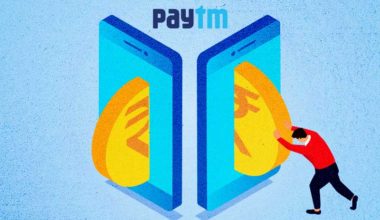Bank Rate vs Repo Rate is one of the most commonly asked questions. The Reserve Bank of India (RBI) monitors both the Bank Rate and the Repo Rate. Also, both of which are rates of interest (ROI) on which RBI grants loans to commercial banks/financial institutions. But the terms and conditions against which RBI lends the money mark the difference between bank rate and repo rate. RBI lends money at a repo rate when banks offer collateral. It could be securities, bonds, agreements, etc. There is no security in loans at the bank rate. The purpose for which RBI uses these two tools determines the benefits of both.
One of the most frequently asked questions is about the difference between the bank rate and the repo rate. The Bank Rate and the Repo Rate are both monitored by the Reserve Bank of India (RBI). In addition, both of these are interest rates (ROI) on which the RBI grants loans to commercial banks/financial institutions. However, the terms and conditions under which the RBI lends money indicate the difference between the bank rate and the repo rate. When banks offer collateral, the RBI lends money at a repo rate. Securities, bonds, and agreements, for example. Loans at the bank rate provide no security. The benefits of these two tools are determined by the purpose for which they are used by the RBI.
Similarities and Differences between the Bank Rate and Repo Rate
| Bank Rate vs Repo Rate | ||
|---|---|---|
| Similarities between Bank Rate and Repo Rate |
|
|
| Dissimilarities between Bank Rate & Repo Rate |
|
|
*Repo Rate is also a part of LAF – Liquidity Adjustment Facility. It is a policy where banks can borrow through repurchase agreements.
Also Read: Repo Rate vs Reverse Repo Rate
Difference Between Bank Rate and Repo Rate
RBI monitors both bank rate and repo rate. Both are to enhance or curtail credit availability in the market and inflation. However, there are notable differences between bank rate and repo rate based on key elements as below:
1. Type of Loan Rate
Both are rates at which RBI lends loans. Banks pay the interest on loans and the principal amount for loans at the bank rate. Banks pay to buy back the securities from RBI for loans at the repo rate
2. Collateral
The repo rate requires collateral such as government securities or bond papers, whereas bank rate loans are unsecured. This is one of the most significant and fundamental differences between the two.
3. Tenure
Loans at repo rates have a one-day time frame, whereas loans at bank rates have a period of up to 28 days.
4. Interest Rate
The bank rate is always higher than the repo rate by a BPS (Basis Points). The term “Basis Point” refers to one-hundredth of a percentage point or one percent of a percent. Equivalently, it is one ten-thousandth
1/100 of % = 1% x % = 1/10,000
The bank rate is available with no collateral and for a longer time period. As a result, it is higher.
5. Objective
Bank Rate loans suffice long-term lending rates and requirements of banks. Whereas, the repo rate is a monetary mechanism to decide the liquidity rate
What is Bank Rate?
Definition
Bank Rate is the rate or discount at which RBI grants loans or advances to commercial banks. Hence, it is also called Discount Rate. The money that commercial banks repay to RBI is the interest amount on the loans.
Features
The loan at bank rate is an agreement between the RBI and the commercial Banks. Below are its salient features:
- They do not require any kind of collateral, which means that there is also no selling and repurchase of eligible securities
- Loans at the bank rate focus on the long-term financial goals of commercial banks. It can be an overnight loan, fortnight, or even 28 days
- Bank rate directly affects the rates of interest (ROI) of commercial bank loans. Commercial banks eventually charge their customers when there is an increase in the bank rate. It is to compensate for the higher interest they pay to RBI
- The bank rate is also meant for a long-term rate change and economic impact. RBI decides the bank rate as per the Monetary Policy of the country. It is a liquidity adjustment tool of RBI to keep the economy in control. It is because the bank rate can change the rates of interest of banks
Impact
Reiterating the fact that bank loan rates rise or fall according to the hike or dip in the bank rate. Rapid economic growth raises the possibility of inflation. Slow economic activities, on the other hand, have a negative impact on the nation’s development. It is one of the RBI’s primary tools for keeping inflation under control. The following effects are caused by a change in the bank rate:
- If the bank rate is high, then it contracts the money flow. It is because it increases the costs of funds for commercial banks’ borrowers. It slows economic growth but is used when there is a fear of rapid growth and subsequent inflation.
- If the bank rate is low, it enhances the liquidity in the market and encourages borrowing as bank loans, which also come at a lower ROI. Spending and investments speed up when loans are cheaper and the economy expands
Policymakers use the bank rate as a hidden weapon to shape the nation’s monetary policy. For example, when there is unemployment and the economy is weak, they will lower the bank rate to attract funds.
What is Repo Rate?
Definition
REPO stands for Repurchase Option. It is the loan rate at which the RBI grants loans to banks in exchange for securities. Banks sell these securities with the intention of repurchasing them. It is purchased back when the banks pay the ‘REPO’ interest rate.
Features
The Repo Rate is imposed by the RBI on banks that serve as an anchor for economic stability. The following are some fundamental aspects of repo rate:
- There is selling and buying of securities. It is thus known as a ‘Repurchase Agreement.’ As a result, banks pay the charge for these securities in order to repurchase them.
- Repo rate has a short tenure of one day
- The RBI, like the bank rate, presides over Monetary Policy Committee meetings to determine the repo rate. The apex body has the authority to change the repo rate in response to economic changes.
- Overnight loans are made available by the RBI at the repo rate. As a result, it serves commercial banks’ short-term financial needs.
Impact
The RBI changes the repo rate to either drain or propel excess liquidity from the market. Due to the slowing economy and the pandemic, the RBI has consistently reduced the repo rate from August 2018 to August 2021. Changes in the repo rate have the following consequences:
- When the repo rate is high, economic activities shrink. The borrowing and spending get costlier for commercial banks. As a result, investments become more costly, and the economy slows. It is a step toward limiting inflation.
- The RBI will lower the repo rate to have a positive impact on the country’s economic activities. Banks can easily borrow money by pledging securities, which they can repurchase at low-interest rates. It also encourages industrial and business ventures, which stimulates the economy.
Unlike bank rates, the repo rate does not directly affect the bank rates. However, it may affect the Marginal Cost-based Lending Rates (MCLR), which, in turn, can modify the rates of home loans.



